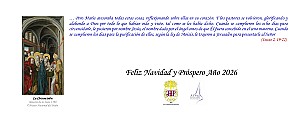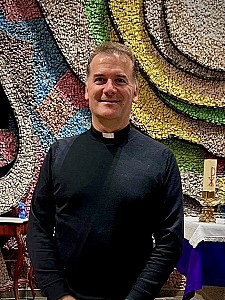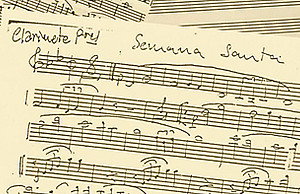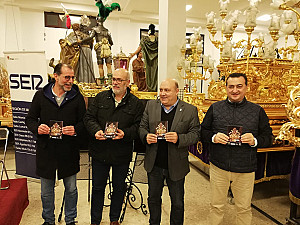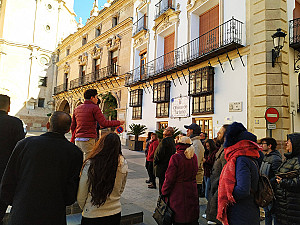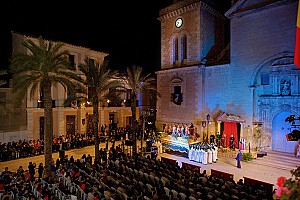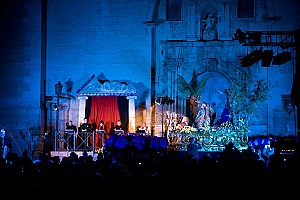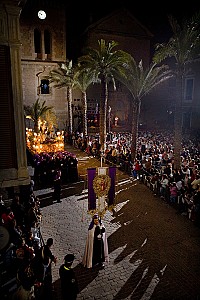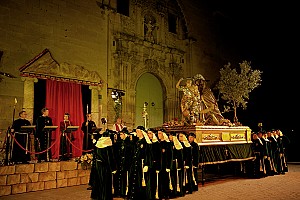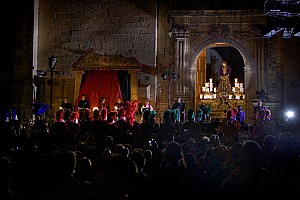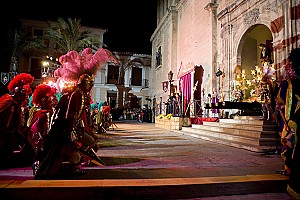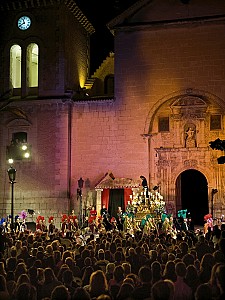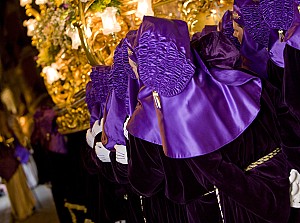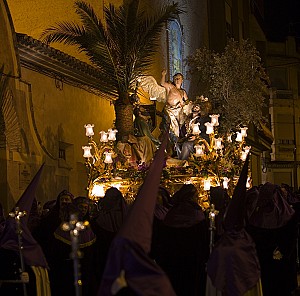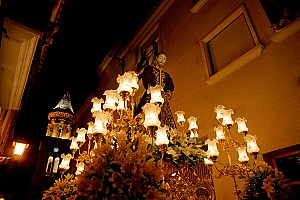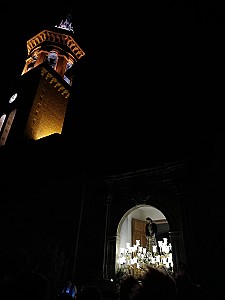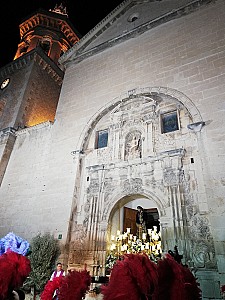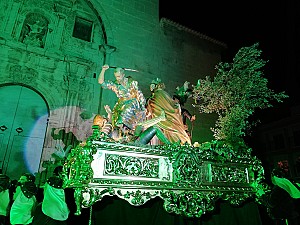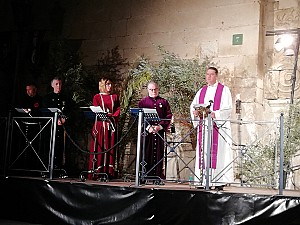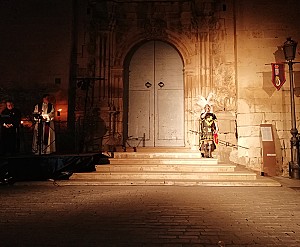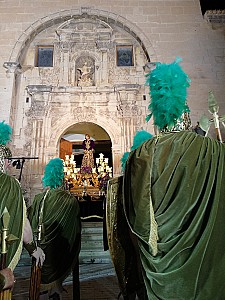Holy Tuesday Night
DESCRIPTION
Although the Representation of El Prendimiento ciezano has its roots in
the s. XVIII, and has a central axis (the dialogue of who are you looking for?)
that continues unchanged, at least, for more than a century, it is from 1996
when the Arrest becomes one of the crucial moments of our Week Santa, by
uniting the strict nucleus of the Arrest with the Procession of Holy Tuesday,
which until then had not had its own thematic content, resulting in a show
where the game of lighting and music allow a representation in which the
narrators give voice to the images of the Steps that embody the evangelical
passages, an audacity of approach whose originality has been worthy of
successive television broadcasts, such as those carried out by TVE and by
Autonomous TV.
The Steps that will give rise to the Procession appear successively, in different episodes, each one in the context of its light setting by digital mapping and sound effects. They arrive at the Plaza (which waits in complete darkness) along Calle Cartas, and stop before the door of the Basilica. The voices of the narrators who recreate the story and the dialogues of the corresponding episode are heard, and each Paso leaves the Plaza with the music of the corresponding passage of the Arrest Sound Band being performed live, and the Paso being incorporated into the Procession that is forging at the end of Calle del Cid. Thus, the scenes of The Holy Supper, The Prayer in the Garden and The Kiss of Judas follow one another; then, after a brief sermon by the priest, the vibrant and high point of the night arrives, the Arrest. The centuries of the Roman Tercio break the darkness and silence of the Plaza in thunderous martiality, with their torches, spears and swords, bows and arrows, shields and scripts, and the rumble of drums that, led by their captain, seek the Redeemer. The trumpets sound, the Pastor repeats the words “Who are you looking for?” And the Captain, after silencing the trumpets, responds "To Jesus the Nazarene." The priest says: "I am". Just at that moment, the Basilica opens its doors and Our Father Jesus Nazareno appears on the threshold. The dialogue is repeated up to three times, and the Nazarene leaves the square at a brisk pace, until joining the Procession, since at the same time that the Arrest is represented, it is organized and leaving from the end of Calle del Cid.
PECULIARITIES, INTEREST OF THE SHOW AND RECOMMENDATIONS
It is essential to witness the arrest in the Plaza Mayor, since it is one of the crucial moments of Holy Week in Cieza. For this purpose, the Board of Brotherhoods provides free chairs that occupy the entire space of the square, in addition to the positions that can be occupied at the foot of the sidewalk. The Act of Arrest, which begins at 9:00 p.m., offers a recreation of extraordinary originality, a sensory spectacle where there is room for the theatrical representation made by the narrators, the display of imagery, the succession of different atmospheres created by the Soundtrack of the Prendimiento, interpreted live, and the complex lighting system by digital mapping in three dimensions of the Basilica's façade that qualifies the necessary setting for each passage. Everything concludes with the spectacular arrival of the Roman Tercio to the square, between torches and trumpets, to arrest Jesus after the historic dialogue of "Who are you looking for?". The appearance of the Paso de Ntro. Father Jesus on the threshold of the Basilica and his subsequent brisk exit from the square, already a prisoner of the Romans, is one of the most peculiar and incomparable moments –in a literal sense– of Holy Week in Cieza.
Subsequently, it is striking to leave the Plaza and look out at any of the streets where the complete Procession is already parading (only the Pasos have paraded through the Plaza, without the accompaniment of their Brotherhoods) with all its tercios and musical accompaniment, which narrates the events of the night that Christ was arrested. It is worth highlighting, above all, the magnificent effigy of Ntro. Father Jesus, the most important of the works carried out by Ignacio Pinazo, as previously stated. In addition, due to its high dimensions and its quality of carving work, the throne of La Oración en el Huerto (1972), by the Lorente Brothers, attracts all eyes at night thanks to the incomparable style and personality of its anderos, which bring out all the party imaginable to the slowest and most solemn slope of the traditional way of carrying the thrones in Cieza.
In the year 2022, and as a result of the collaboration between the Junta de Hermandades Pasionarias and the Cieza City Council, the Prendimiento took another step forward with the renovation of its setting and lighting, incorporating the aforementioned digital mapping projection on the surface; and, in a very special way, also premiering a new Soundtrack composed for Cieza by the musician Roque Baños, one of the most brilliant composers on the international scene, and which was performed live by the Municipal Band of Cieza. With the incorporation of this work by Roque Baños, our Arrest continues to grow in uniqueness and originality; in the context of Ciezana's Holy Week commitment to always look for the best artists so that they leave a touch of their genius, enriching the immense heritage of our fashion shows.
ITINERARY
Plaza Mayor, Cid, La Parra, Rincón de los Pinos, Pinos, Larga, Buitragos, San Sebastián, Esquina del Convento, Mesones, Cadenas, Barco, Cánovas del Castillo/Diego Tortosa/La Hoz, San Pedro and Plaza Mayor.
TIME
21:00
